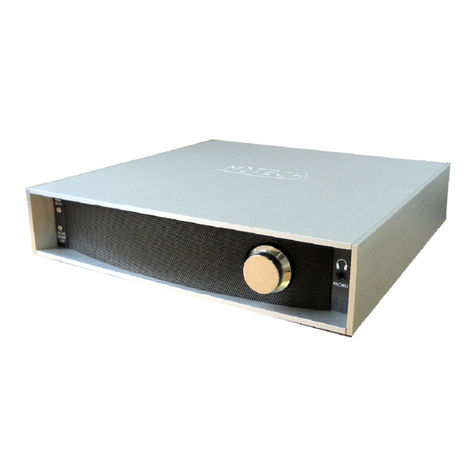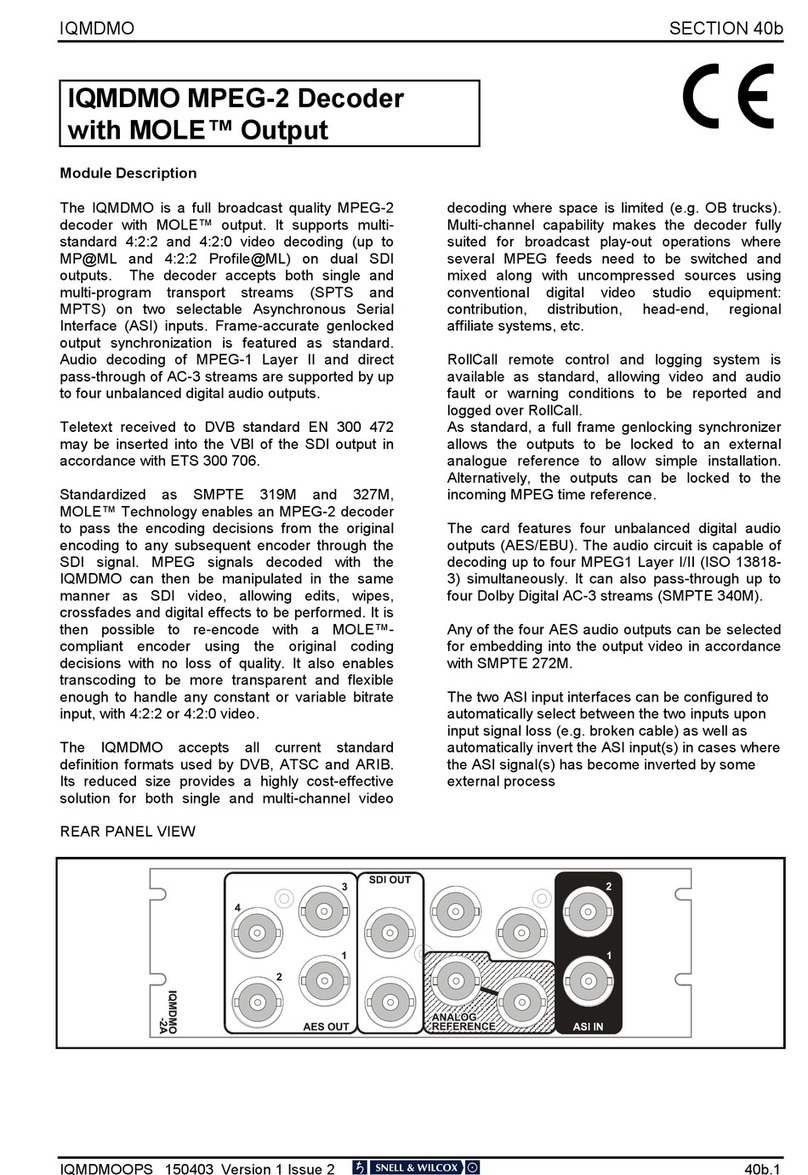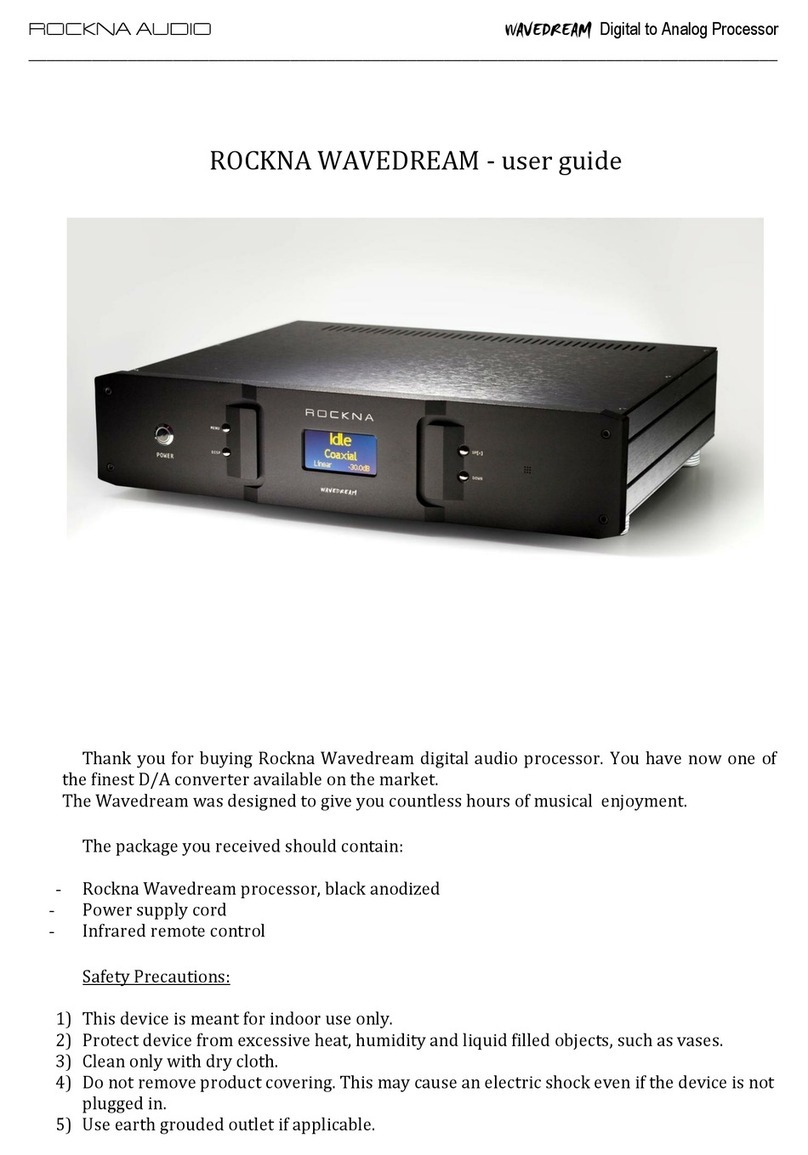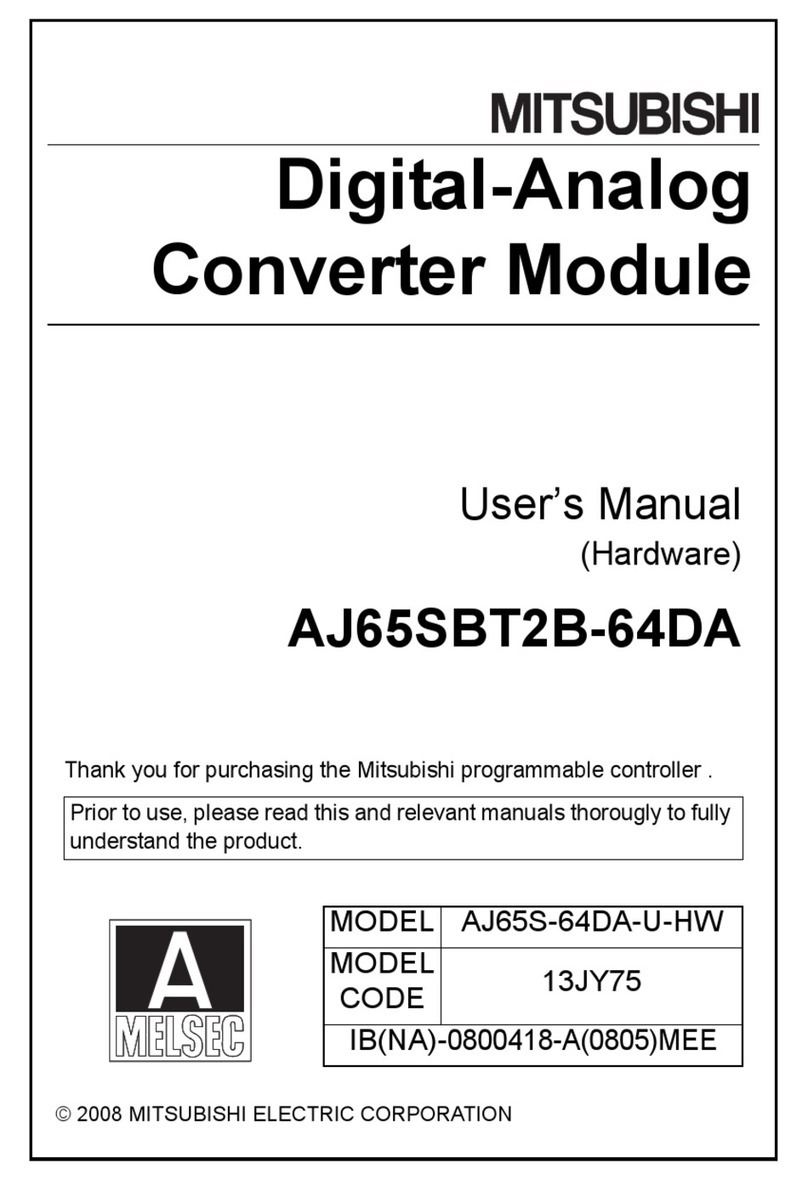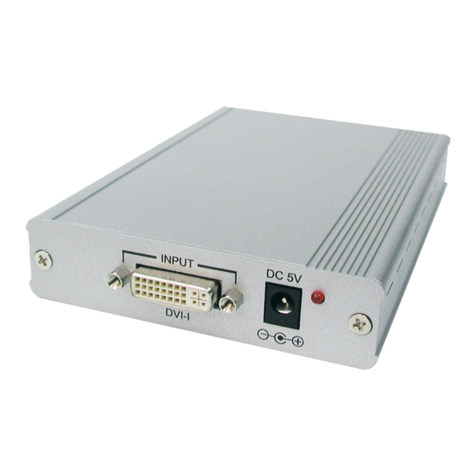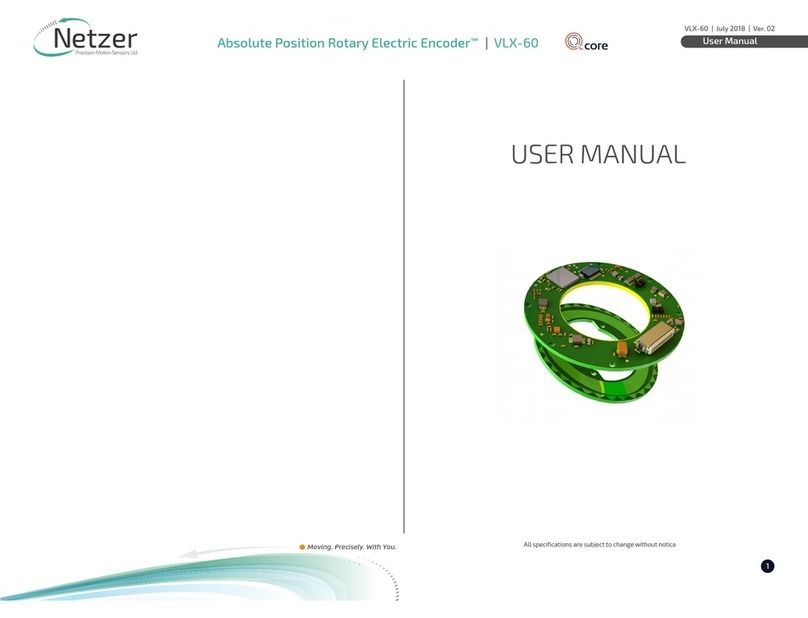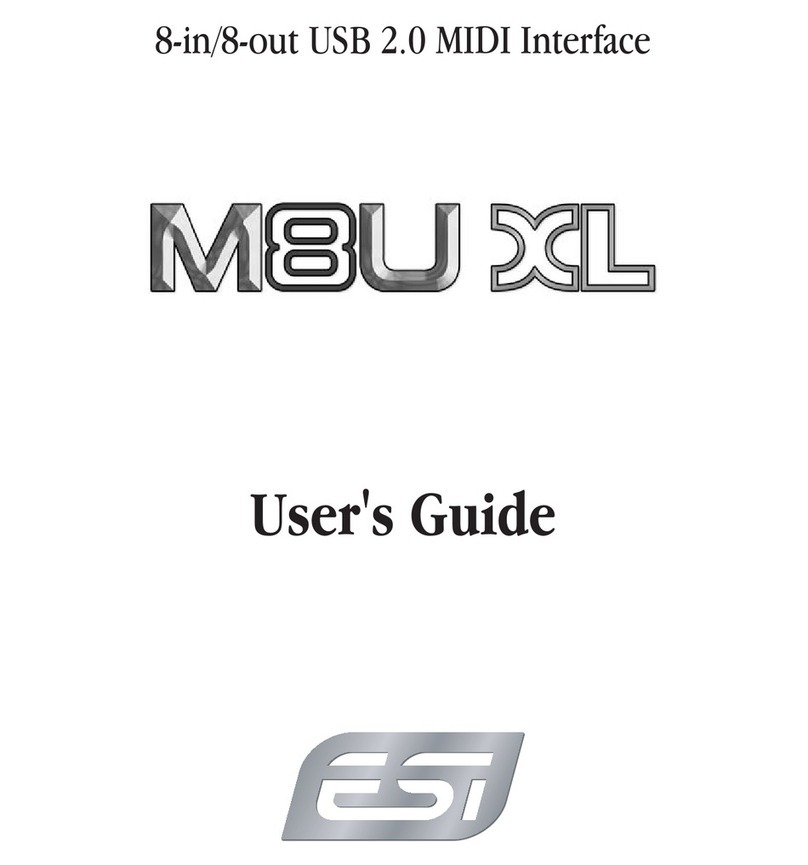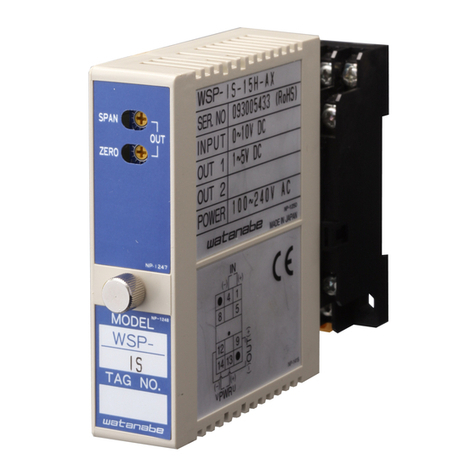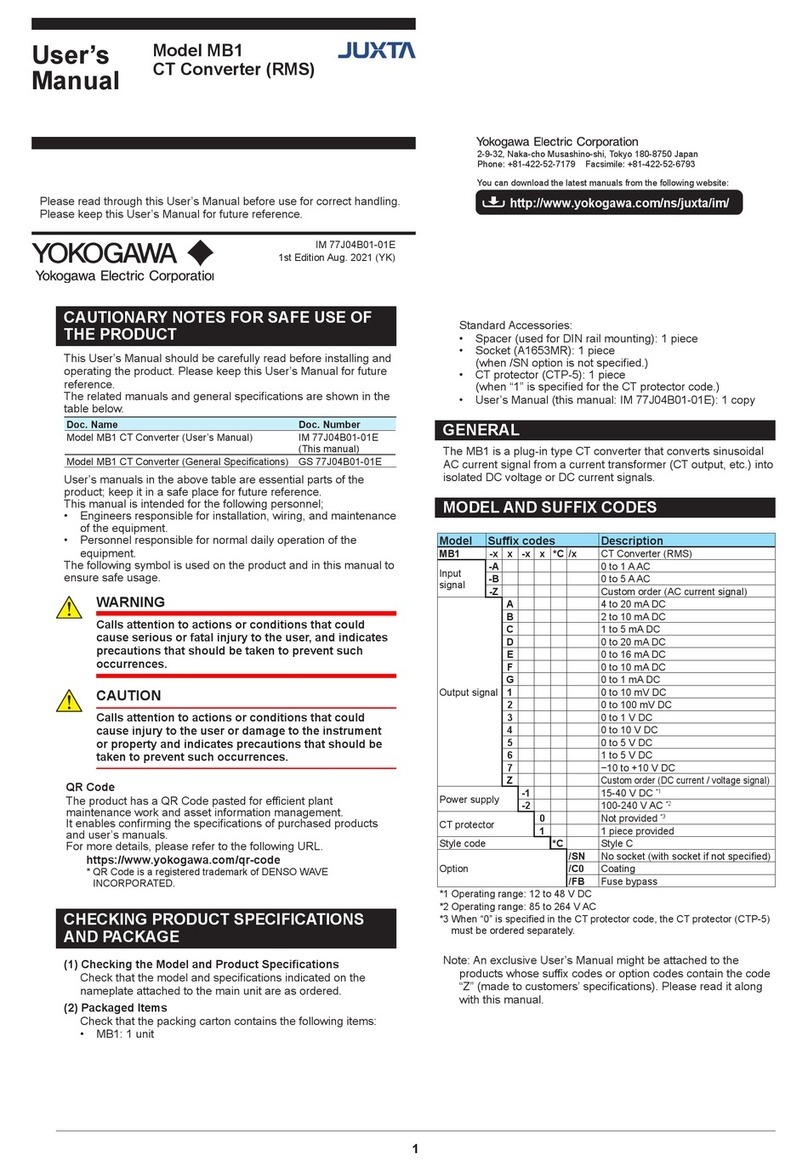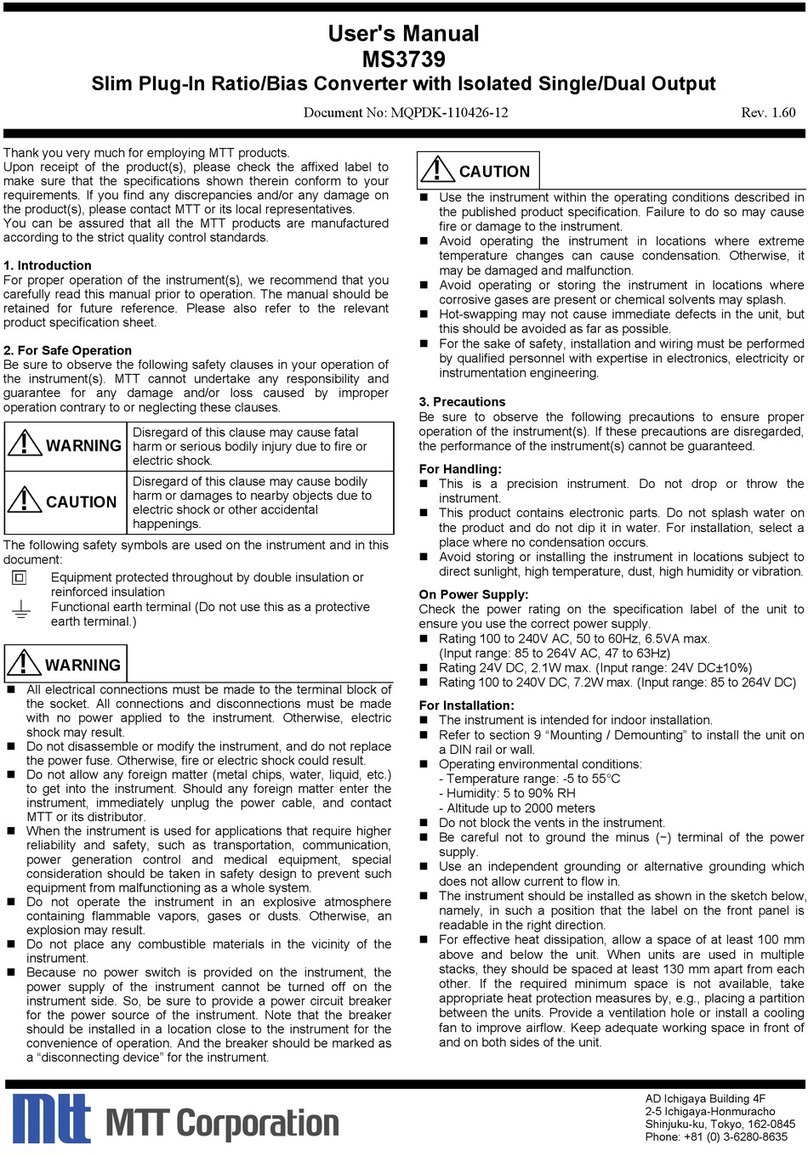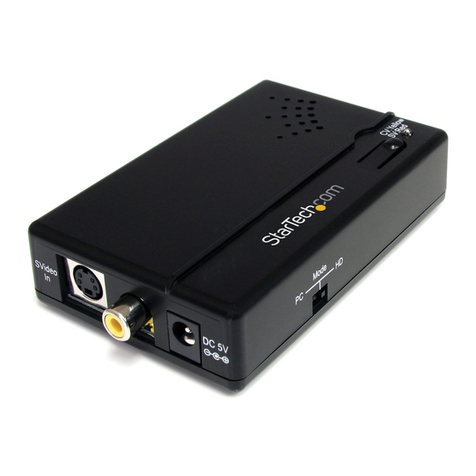ELGO Electronic LIMAX02 Series User manual

Operating Manual
SERIE LIMAX02
Magnetic Absolute Shaft Information System for Elevators
Robust measuring principle for usage in rough environments
Insensitive against dirt, smoke and humidity
Simple and flexible installation
High accuracy and reproducibility
Absolute position measurement with a length up to 260 m
Resolution up to 1 mm, higher resolution on request
Absolute position is always directly available
no referencing even after long power failure
Compatible with many established controls with absolute encoder interface
Available interfaces:
SSI, CAN, CANopen (DS406, DS417), RS422, RS232, PROFIBUS
799000350 / Rev. 9 / 2019-04-02
Translation of the original operating manual

Contents
- 3 -
1Contents
1Contents ..................................................................................................... 3
2General, Safety, Transport and Storage .................................................... 4
2.1 Information Operating Manual ........................................................................................... 4
2.2 Explanation of Symbols...................................................................................................... 4
2.3Statement of Warranties..................................................................................................... 5
2.4 Demounting and Disposal.................................................................................................. 5
2.5 General Causes of Risk ..................................................................................................... 5
3Product Features ........................................................................................ 7
3.1 Functional principle........................................................................................................... 7
4Technical Data ........................................................................................... 8
4.1 Identification .................................................................................................................... 8
4.2 Dimensions Sensor Standard .............................................................................................. 8
4.3 Dimensions Sensor Option unguided................................................................................... 9
4.4 Dimensions Sensor Option PNO ......................................................................................... 9
4.5 Dimensions Magnetic Tape .............................................................................................. 10
4.6 Technical Data Sensor ..................................................................................................... 10
4.7Technical Data Magnetic Tape ......................................................................................... 11
5Installation and First Start-Up ................................................................. 12
5.1 Operating Area .............................................................................................................. 12
5.2 Description installation of the Sensor ................................................................................. 13
5.3 Description installation / Mounting of the Magnetic Tape ..................................................... 14
6Connections and Interfaces...................................................................... 19
6.1 LED’s (Operating status and notices).................................................................................. 19
6.2 CAN Interface ................................................................................................................ 19
6.3 SSI Interface ................................................................................................................... 26
6.4 RS232 / RS422 / RS485*................................................................................................. 27
6.5Option Unguided ........................................................................................................... 30
6.6 Option PROFIBUS Interface.............................................................................................. 31
7Disturbances, Maintenance, Cleaning ..................................................... 34
7.1 Fault Clearance.............................................................................................................. 34
7.2 Re-start after Fault Clearance ........................................................................................... 34
7.3 Maintenance .................................................................................................................. 35
7.4 Cleaning ....................................................................................................................... 35
8Type Designation ..................................................................................... 36
8.1 Type Designation ............................................................................................................ 36
8.2 Control specific Sensors ................................................................................................... 37
8.1 Accessories .................................................................................................................... 38
9Index ........................................................................................................ 39

General, Safety, Transport and Storage
- 4 -
2General, Safety, Transport and Storage
2.1 Information Operating Manual
This manual contains important information regarding the handling of the device. For your own safety and operational safety, please ob-
serve all safety warnings and instructions.
Precondition for safe operation is the compliance with the specified safety and handling instructions. Moreover, the existing local accident
prevention regulations and the general safety rules at the site of operation have to be observed.
Please read the operating manual carefully before starting to work with the device! It is part of the product and should be kept close to the
device and accessible for the staff at any time. The illustrations in the manual are for better demonstration of the facts. They are not neces-
sarily to scale and can slightly differ from the actual design.
2.2 Explanation of Symbols
Special notes in this manual are characterized by symbols. The notes are introduced by signal words which express the magnitude of danger.
Please follow this advice and act carefully in order to avoid accidents, damage, and injuries.
Warning notes:
DANGER!
This symbol in connection with the signal word “Danger” indicates an immediate danger for the life and health of
persons. Failure to heed these instructions can result in serious damage to health and even fatal injury.
WARNING!
This symbol in connection with the word „Warning” means a possibly impending danger for the life and health of
persons. Failure to heed these instructions can result in serious damage to health and even fatal injury.
CAUTION!
This symbol in connection with the signal word “Caution” indicates a possibly dangerous situation. Failure to heed
these instructions can lead to minor injuries or damage of property.
Special safety instructions:
DANGER!
This symbol in connection with the signal word “Danger” indicates an immediate danger for the life and health of
persons due to voltage.
Failure to heed these instructions can result in serious damage to health and even fatal injury. The operations may
only be carried out by a professional electrician.
Tips and recommendations:
NOTE!
…points out useful tips and recommendations as well as information for an efficient and trouble-free operation.
Reference marks:
Marks a reference to another chapter of this manual.
Marks a reference to another chapter of another document.

General, Safety, Transport and Storage
- 5 -
2.3 Statement of Warranties
The producer guarantees the functional capability of the process engineering and the selected parameters.
2.4 Demounting and Disposal
Unless acceptance and disposal of returned goods are agreed upon, demount the device considering the safety instructions of this manual
and dispose it with respect to the environment.
Before demounting, disconnect the power supply and secure against re-start. Then disconnect the supply lines physically and discharge
remaining energy. Remove operational supplies and other material.
Disposal:
Recycle the decomposed elements: Metal components in scrap metal, Electronic components in electronic scrap, Recycle plastic compo-
nents, dispose the remaining components according to their material consistence
CAUTION!
Wrong disposal causes environmental damages!
Electronic scrap, electronic components, lubricants and other auxiliary materials are subject to special refuse and can
only be disposed by authorized specialists!
Local authorities and waste management facilities provide information about environmentally sound disposal.
Safety
CAUTION!
Please read the operating manual carefully, before using the device! Observe the installation instructions! Only start
up the device if you have understood the operating manual. The operating company is obliged to take appropriate
safety measure.
The initial operation may only be performed by qualified and trained staff.
Selection and installation of the devices as well as their embedding into the controlling system require qualified
knowledge of the applicable laws and normative requirements on the part of the machine manufacturer.
2.5 General Causes of Risk
This chapter gives an overview of all important safety aspects to guarantee an optimal protection of employees and a safe and trouble-free
operation. Non-observance of the instructions mentioned in this operating manual can result in hazardous situations.
2.5.1 Personal Protective Equipment
Employees have to wear protective clothing during the installation of the device to minimize danger of health.
Therefore: Change into protective clothing before performing the works and wear them throughout the process.
Additionally observe the labels regarding protective clothing in the operating area.
Protective clothing:
PROTECTIVE CLOTHING
… is close-fitting working clothing with light tear strength, tight sleeves and without distant parts. It serves preliminari-
ly for protection against being gripped by flexible machine parts.
Do not wear rings, necklaces or other jewellery.
PROTECTIVE GLOVES
…for protecting the hands against abrasion, wear and other injury of the skin.
PROTECTIVE HELMET
…for protection against injuries of the head.

General, Safety, Transport and Storage
- 6 -
2.5.2 Conventional Use
The ELGO-device is only conceived for the conventional use described in this manual.
The LIMAX02 - ELGO- length measuring system only serves to measure lengths.
CAUTION!
Danger through non-conventional use!
Non-intended use and non-observance of this operating manual can lead to dangerous situations.
Therefore:
Only use the device as described
Strictly follow the instructions of this manual
Avoid in particular:
Remodelling, refitting or changing of the construction or single components with the intention to alter the
functionality or scope of the device.
Claims resulting from damages due to non-conventional use are not possible.
Only the operator is liable for damages caused by non-conventional use.
2.5.3 Safety Instructions for Transport, Unpacking and Loading
CAUTION!
Transport the package (box, palette etc.) professionally. Do not throw, hit or fold it.
2.5.4 Handling of Packaging Material
Notes for proper disposal: 2.4
2.5.5 Inspection of Transport
Check the delivery immediately after the receipt for completeness and transport damage.
In case of externally recognizable transport damages:
Do not accept the delivery or only accept under reserve.
Note the extent of damages on the transportation documents or delivery note.
File complaint immediately.
NOTE!
Claim any damage immediately after recognizing it. The claims for damage must be filed in the lawful reclaim peri-
ods.
2.5.6 Storage
Store the device only under the following conditions:
Do not store outside
Keep dry and dust-free
Do not expose to aggressive media
Protect from direct sun light
Avoid mechanical shocks
Storage temperature (4) needs to be observed
Relative humidity (4) must not be exceeded
Inspect packages regularly if stored for an extensive period of time (>3 months)

Product Features
- 7 -
3Product Features
LIMAX02 is an absolute measuring shaft information system that is used for positioning of elevator cars. It con-
sists of only two components: sensor and magnetic band.
A big advantage of the system is the simple and flexible installation. The assembly of the system components
is very simple and can be performed by specialists in less than an hour. The system can be placed anywhere in
the shaft, depending of the space conditions. With the small space requirement, LIMAX02 is perfect for retrofit-
ting and modernization.
LIMAX02 detects the absolute car position up to a hoisting height of 260 meters and is designed for speeds of
up to 10 m/s. In the standard configuration LIMAX02 evaluates the position with a resolution of 1 mm. Resolu-
tions up to 0.0625 mm are possible.
LIMAX02 is equipped with various interfaces and thus can be directly connected to the most established elevator
controls.
The features at a glance:
Robust measuring principle for usage in rough environments
Simple and flexible installation
High accuracy and reproducibility
No slip
Absolute position is always directly available - no referencing even after long power outages
3.1 Functional principle
The concept is simple: A sensor mounted on the elevator car detects the current absolute car position using Hall
sensors, which read the magnetic tape mounted in the shaft without any contact. Through this method, the car´s
position can be determined at any time with high accuracy. The guide is only used to keep the tape within a
defined distance from the sensor.
Due to its robustness, the magnetic tape technology is ideal for use in elevator systems - dust, dirt, and even
dense black smoke won't affect measurement quality. The system even withstands humidity and high tempera-
tures without any problems - making LIMAX02 ideally suited for firefighters´ elevators. And that with a long
maintenance-free service life.

Technical Data
- 8 -
4Technical Data
4.1 Identification
The type label serves for the identification of the unit. It is located on the housing of the sensor and gives the
exact type designation (=order reference, see type designation) with the corresponding part number.
Furthermore, the type label contains a unique, traceable device number.
When corresponding with ELGO always indicate this data.
4.2 Dimensions Sensor Standard
Figure 1: Dimensions Sensor Standard

Technical Data
- 9 -
4.3 Dimensions Sensor Option unguided
Figure 2: Dimensions Sensor Option unguided
4.4 Dimensions Sensor Option PNO
Figure 3: Dimensions Sensor Option PNO
244
236
40
55
55
51
271
55
51
32,5
41,5
13,5
38
19,5

Technical Data
- 10 -
4.5 Dimensions Magnetic Tape
Figure 4: Dimensions Magnetic Tape
4.6 Technical Data Sensor
LIMAX02 (Standard version)
Mechanical Data
Measuring principle
absolute
Repeat accuracy
+/- 1 Increment
System accuracy in µm at 20°C
+/- (1000 + 50 x L[m])
L = measuring length in meter
Distance from sensor to magnetic
tape
4 mm
Basic pole pitch
8 mm
Sensor housing material
aluminium
Sensor housing dimensions
L x W x H = 246 x 55 x 55 mm
Necessary type
AB20-80-10-1-R-D-15-BK80
Maximum measuring length
260 m
Connection
Open cable ends (more options 8)
Sensor cable
3 m standard cable length (other on request)
Weight
approx. 460 g without cable (cable approx. 60 g/m)
Electrical Data
Supply voltage
10 … 30 VDC
Residual ripple
10 …30 VDC < 10%
Power input
max. 200 mA
Interfaces
SSI, CAN, CANopen (DS406, DS417), RS422, RS232, RS485, PROFIBUS
Resolution
According to the Type Designation (8)
Speed
max. 10 m/s (higher speeds on request)
Conditions
Storage temperature
-20 … +85° C
Operation temperature
-10 … +70° C
(-25 … +85° C on request)
Humidity
max. 95 %, not condensing
Protection class
IP50
Scale 5:1

Technical Data
- 11 -
4.7 Technical Data Magnetic Tape
The magnetic tape consists of two components:
The actual magnetic tape which carries the position information
A mechanical stainless steel back iron
TEMPLATE Magnetic Tape AB20-80-10-1-R-D-15-BK80
Coding
absolute, single track system
Pole pitch
8 mm
Operation temperature installed
-20 …+65° C
(-20 … +80° C when using without adhesive tape, options „B“ or „D“)
Storage temperature uninstalled
Short-term: -10 … +60° C
Medium-term: 0 …+40° C
Long-term: +18° C
(-20 … +80° C when using without adhesive tape, options „B“ or „D“)
Gluing temperature:
+18 … +30° C
Relative humidity
max. 95 %, non-condensing
Accurateness 20°C in µm
+/- (1000 + 50 x L[m])
(L = measuring length in meters)
Material carrier tape
Precision strip 1.4310 / X10CrNi 18-8 (EN 10088-3)
Double-faced adhesive tape
3M-9088 (observe instructions), others on request
Dimensions
without adhesive tape:
10 mm (+/- 0.1) x 1,35 mm (+/- 0.11)
with adhesive tape (excl. carrier):
10 mm (+/- 0.1) x 1,56 mm (+/- 0.13)
with adhesive tape (incl. carrier):
10 mm (+/- 0.1) x 1,63 mm (+/- 0.14)
Length expansion coefficient
16 x 10-6 1/K
Thermal length expansion
∆L[m] = L[m] x [1/K] x ∆[K]
(L = tape length in meters, ∆= relative temperature change)
Available lengths
up to 260 m
Weight magnetic tape
ca. 62 g/m (incl. magnetic tape and cover tape)
Tape imprint
ELGO standard, printing color black, digit height >= 5 mm
Influence of external magnets
External magnetic fields must not exceed 64 mT (640 Oe; 52 kA/m) on
the surface of the magnetic tape as this could damage or destroy the
code on the tape.
Protection class
IP65

Installation and First Start-Up
- 12 -
5Installation and First Start-Up
CAUTION
Please read the operating manual carefully before using the device! Strictly observe the Instal-
lation instructions!
In case of damage caused by failure to observe this operating manual, the warranty expires.
ELGO is not liable for any secondary damage and for damage to persons, property or assets.
Der Betreiber ist dazu verpflichtet, geeignete sicherheitsrelevante Maßnahmen zu ergreifen
und durchzuführen.
The operator is obliged to take appropriate safety measures. The first start-up may only be
performed by staff that has been trained and authorized by the operator.
5.1 Operating Area
WARNING!
Do not use the device in explosive or corrosive environments!
The device must not be installed close to sources of strong inductive or capacitive interference
or strong electrostatic fields!
CAUTION!
The electrical connections must be made by suitably qualified personnel in accordance with
local regulations.
The device may be designed for switchboard mounting. During work on the switchboard, all
components must be de-energized if there is a danger of touching the energized parts!
(protection against contacts)
Wiring works may only be performed in the de-energized state!
Thin cable strands have to be equipped with end sleeves!
Before switching on the device, connections and plug connectors have to be checked!
The device must be mounted in a way that it is protected against harmful environmental influ-
ences such as splashing water, solvents, vibration, shock and severe pollution and the operat-
ing temperature must not be exceeded.

Installation and First Start-Up
- 13 -
5.2 Description installation of the Sensor
5.2.1 Installation Principe
Figure 5: Installation with tension weight
Figure 6: Installation with dowel and spring
LIMAX02 can be installed at any position in the shaft, depending on spatial conditions and layout of the particu-
lar elevator installation.
The magnetic tape is installed freely suspended in the shaft. It can be fixed with the RMS mounting kit (available
as option) on the guide rail. Alternatively fixation in the shaft head is either on beams or directly bolted into the
ceiling. The necessary tension in the tape is provided by a tension weight of about 5 kg. A sway guard at the
bottom will keep the tape from swaying in an uncontrolled position. Alternatively the magnetic tape can be ten-
sioned by a spring.
The sensor head can be mounted onto the cabin or cabin frame, depending on the spatial conditions of the
elevator.
Sensor
Magnetic tape
Guide rail
Upper tape fixation
Tension weight
Sway guard
Upper tape fixation
Sensor
Magnetic tape
Spring
Guide rail

Installation and First Start-Up
- 14 -
5.2.2 Installation of the Sensor
The sensor is fixated on the cabin or on the car frame. The mounting position is basically determined by the
condition.
The integrated mounting notches on the housing of
the sensor head allow for a very simple and self-
explanatory installation from three sides. You can
either use M6 hexagon head screws (DIN 933) or M6
square nuts (DIN 562), to mount the system at the
desired position.
Figure 7: Mounting grooves on the sensor
NOTE
During installation of the magnetic tape in the sensor, pay attention to the marks on the mag-
netic tape and on the sensor head.
Wrong orientation of tape vs. Sensor head will yield incorrect position readings!
The arrows printed on the magnetic tape and sensor head point in positive counting direction
(in the direction of the shaft head)!
5.3 Description installation / Mounting of the Magnetic Tape
NOTE External Magnetic Fields
The magnetic tape must not be influenced by external magnetic fields!
The magnetic tape must not come into direct contact with other magnetic fields (e.g. per-
manent magnets, magnetic clamps, electromagnets, magnetic stands)! This may cause
irreparable damage, which will compromise the measuring accuracy or even the function-
ing.
5.3.1 General Information
The technology has proven to be highly robust.LIMAX02 will work under the most adverse environmental condi-
tions. Extreme temperatures, high moisture and excessive soiling will not alter the information coded onto the
tape nor will these conditions affect reading precision of the sensor. Even weak magnetic fields such as they are
generated by door magnets can be tolerated.
If some basic rules and guidelines are followed LIMAX02 systems require a minimum amount of installation and
maintenance effort while offering maximum lifetime.
One important issue to consider is the protection of the magnet tape against mechanical wear. The LIMAX02
tape consists of two components:
-The magnetic tape which actually carries the position information
-A protective steel tape which gives the mechanical properties

Installation and First Start-Up
- 15 -
5.3.2 Installation Concept
5.3.2.1 Basic Principle for the Mounting
NOTE!
The magnetic tape itself is not designed to withstand excessive mechanical wear. It is there-
fore important to ensure that the system is installed such that the mechanical contact between
tape and sensor head is mainly between the steel tape and the polymer sensor guide. These
two materials have been specifically paired for this application.
Avoiding contact between the magnetic side and the sensor could be achieved with a perfectly perpendicular
installation of the band. Yet, in reality this is not practicable. It is therefore preferable to install the tape with a
horizontal offset from the sensor. During operation this method will result in a forced contact between the steel
side of the band and the polymer guide of the sensor which guarantees an optimal operation of the system.
Figure 8: Assessment of the pretention of the magnetic tape
Wrong Tolerable Recommended
Constant contact
between magnetized side
and sensor housing lead
to abrasion
Vertical alignment
minimal contact between
band and sensor
Enforced contact
between steel band
and polymer housing
Tape touches
the guide with
the magnetized
side
Tape touches
the guide with
the steel side

Installation and First Start-Up
- 16 -
5.3.3 Installation Procedure
1. Attach the top end of the tape in the shaft head. Ideally use an ELGO Mounting Kit. Check for correct
orientation of the tape. The arrows on the magnetic side must point in upward direction.
Figure 9: Correct orientation of the magnetic tape
2. The magnetic side of the tape must face the sensor body. In most situations this means that the steel side
points to the shaft wall.
3. Drive down the shaft with inspection speed and unroll the tape. The ELGO tape packaging system has
been specifically designed for this purpose. The tape can be unwound directly from the box without open-
ing.
4. Attach the tension weight (about 7.5 kg) at the bottom end of the tape in the shaft. Secure the tape with a
sway guard. Pay attention to a proper vertical mounting of the tape.
If you use dowels to fix the tape in the shaft, tighten the spring such, that the according tractions results to
minimum 7.5 kg. When using the ELGO Mounting Kit RMS/RMS90 this is equivalent to a spring elonga-
tion of about 90 mm.
Note that slightly higher tensile forces are never a problem, but avoid under-tensioning. In higher build-
ings it may even be preferable to slightly increase the tension in order to prevent flapping of the tape dur-
ing operation. However, if correctly installed tensile forces of more than 10 kg should never be necessary.
5. Drive the car to the middle of the shaft.
6. Attach the sensor to the car. The side with the cable outlet and the LED’s must face upward.
7. Adjust the sensor using the tape as a reference. First, align sensor and magnet band on their centerline.
Figure 10: Distance and orientation of the magnetic tape in relation to the sensor
Shaft head Shaft pit
Magnetic Tape
Sensor
Mounting Angle
Car

Installation and First Start-Up
- 17 -
8. Adjust now the distance between sensor and tape. Up to a travel height of 50 m we recommend an offset
of at least 15 mm. This will ensure steady contact between steel side of the band and the polymer guide
of the sensor. This level can be increased later, if it turns out that the band still rubbing with the magnetic
side on the sensor.
In higher installations this distance may be increased by the initial assembly up to 5 cm.
Pay attention to a perpendicular alignment of the sensor. Misalignment will lead to increased wear.
9. Pass the tape through the sensor. Loosen the splint-pin and release the polymer guide. Insert the tape and
re-attach the guide with the tape in its position.
10. Pay attention that the pad does not slip after removal of the polymer guide from the aluminum guide out
and drops down in the shaft.
11. Check for proper alignment of band vs. sensor. Any angular offset should be corrected.
Figure 11: Assessment of the guiding rail of the tape in the sensor - twisted magnetic tape
Figure 12: Assessment of the guiding rail of the tape in the sensor - skewed mounting of the magnetic tape
Tape is flat in
the guide
Tape is
skewed in the
guide
Tape is
skewed in the
guide
Tape is flat in
the guide
Tape is
skewed in the
guide
Tape is
skewed in the
guide

Installation and First Start-Up
- 18 -
12. IMPORTANT: Installation check!
Values for tape tension and offset between tape and sensor are guidelines based on experience. But in
any case, a proper check after installation is mandatory. It must absolutely be avoided that the magnetic
side constantly grinds on the sensor body during operation. Run an inspection trip along the complete
shaft. Observe the system and pay attention to the respective positions of band and sensor. You have
achieved an optimal installation if the steel side of the tape is constantly pressed slightly against the poly-
mer guide of the sensor. At some points in the shaft also double-check on the bottom side of the sensor.
If the sensor is tilted it may look good on top but the tape can still grind along the bottom edge of the
sensor.
Figure 13: Assessment of the vertical alignment of the sensor
13. If the installation check reveals that the tape slides on magnetic side, start to increase the offset between
sensor and tape. Values of up to 5 cm are acceptable. If this measure does not solve the problem it is
very likely that the tape is not plumb in the shaft. This is easy to check for, provided your elevator control
allows for inspection trips without the absolute position signal: Just take the tape out of the sensor and
run an inspection trip along the shaft. Observe the distance between sensor and tape along the travel.
Misalignments will become obvious.
Also ensure that the tension on the tape is sufficient. A loosely tensioned tape will hinder proper guiding.
14. After completion of the installation clean the tape. Beginning at the top of the shaft drive down the com-
plete travel distance pulling the magnet tape through a dry cloth.
Be specifically alert if steel construction work is taking place in the shaft. Steel particles released by grind-
ing, welding, or such work will adhere to the magnetic tape. Clean this debris off instantly.
Repeat the cleaning process before putting the elevator into service after complete installation.
Recommended Falsche vertikale
Ausrichtung

Connections and Interfaces
- 19 -
6Connections and Interfaces
6.1 LED’s (Operating status and notices)
The LED’s located on the front serve for monitoring of operating conditions.
With startup it has to be ensured that the yellow LED illuminates as this monitors the internal supply voltage.
Figure 14: LED signals on the upper side of the sensor
PWR YELLOW Supply voltage
ON = Supply voltage OK
OFF = Supply voltage not provided
RUN GREEN
for CANopen device: RUN-LED according to DR 303-3
other device: Interface state, flashes during active communication
ERR RED
for CANopen device: ERR-LED according to DR303-3
other device: Error message
ON = State error, system not operational
OFF = State OK, system ready for operation
TAPE YELLOW Indicator for magnet tape
ON = Magnet tape missing
OFF = Magnet tape available
6.2 CAN Interface
6.2.1 CAN Standard
Table 1: Configuration of CAN Standard
CAN Standard
Bitrate
250 kbit/s
Resolution
1.0 mm
Identifier
184 (hex)
First 4 Bytes
Position in mm
Next 2 Bytes
Speed in mm/s

Connections and Interfaces
- 20 -
Figure 15: Protocol CAN standard
6.2.2 CANopen DS 406 and DS417
For LIMAX02 the CANopen Interfaces DS406 (encoder profile) und DS417 (lift profile) are available. These
interfaces are configured by default as follows:
Table 2: Configuration of CANopen DS406
CANopen DS406
Bit rate
250 kbit/s
Identifier
184 (hex)
Event timer
10 ms
Producer heartbeat
500 ms
Resolution
1.0 mm
First 4 Bytes
Position in mm
Next 2 Bytes
Speed in mm/s
Figure 16: Protocol DS406
Table 3: Configuration of CANopen DS417
CANopen DS417
Bit rate
250 kbit/s
Identifier
18 C (hex) [Node ID 0x04]
Event timer
0 (switched off)
Producer heartbeat
500 ms
Resolution
0.5 mm
Figure 17: Protocol DS417
ABS-Position
Speed
xxh
MSB
yyh
LSB
yyh
MSB
xxh
xxh
LSB
xxh
ABS-Position
Speed
xxh
MSB
yyh
LSB
yyh
MSB
xxh
xxh
LSB
xxh
ABS-Position
xxh
MSB
xxh
xxh
LSB
xxh
Table of contents
Other ELGO Electronic Media Converter manuals
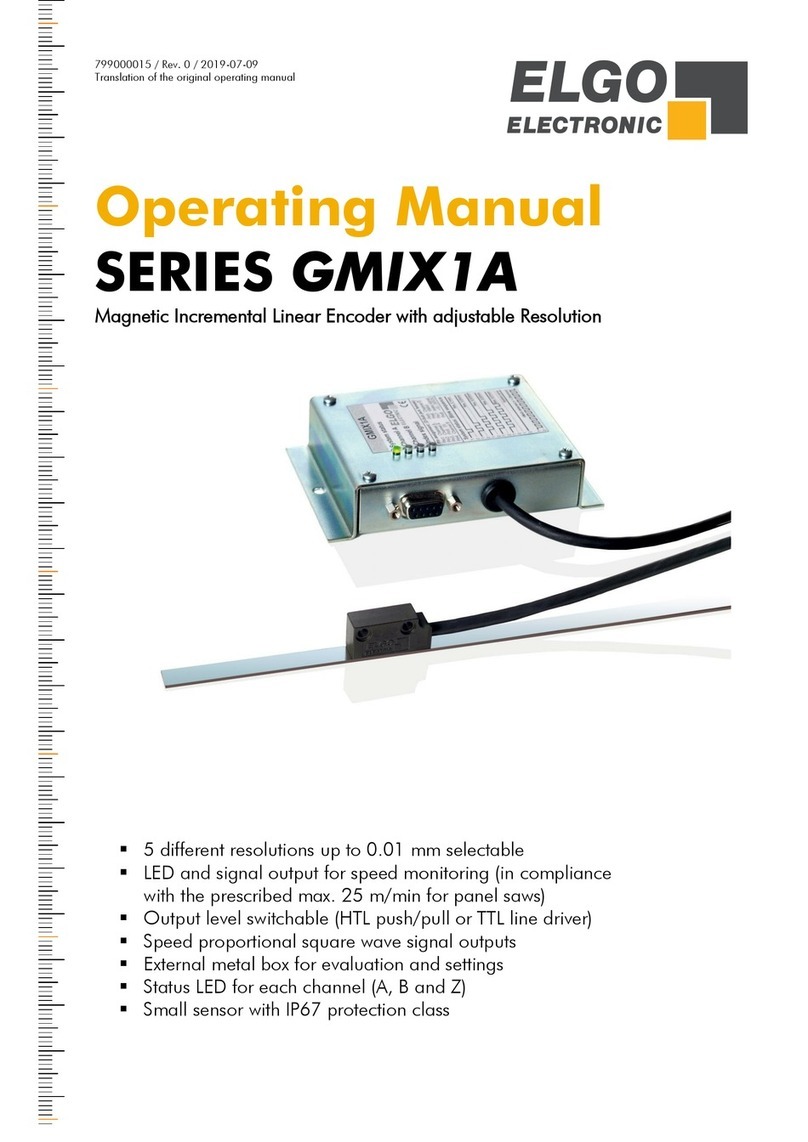
ELGO Electronic
ELGO Electronic GMIX1A Series User manual

ELGO Electronic
ELGO Electronic PMIX Series User manual
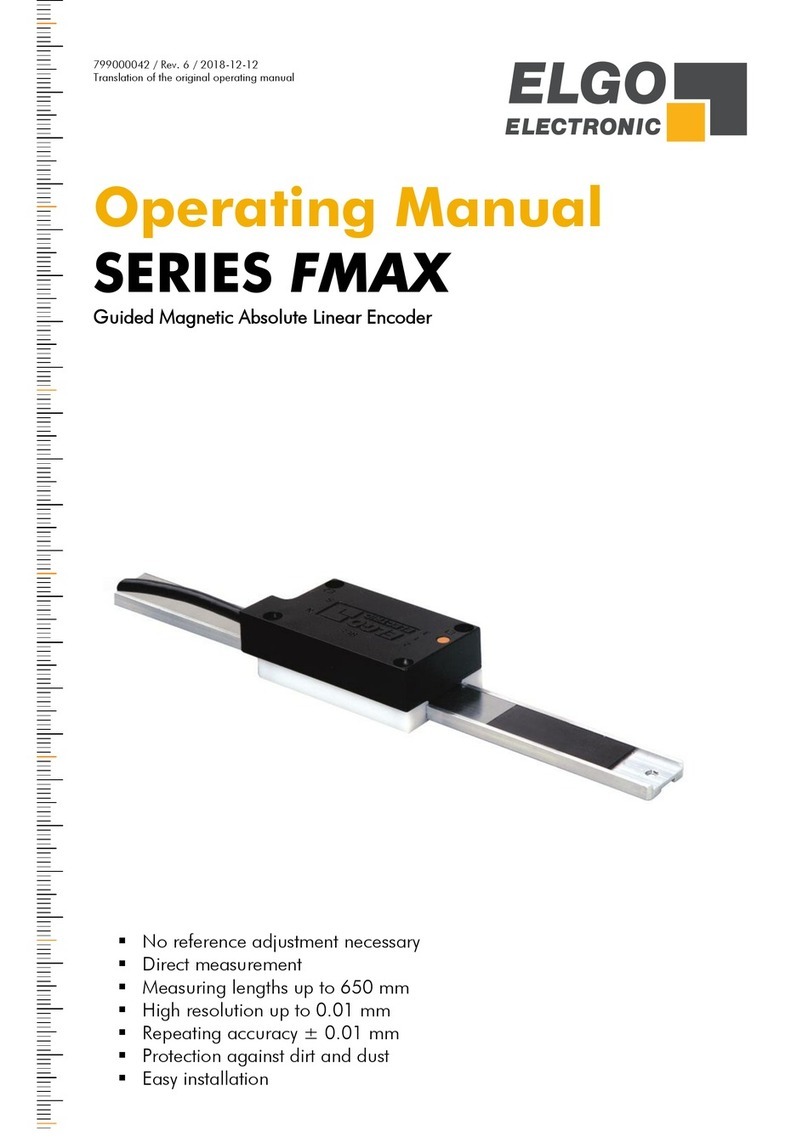
ELGO Electronic
ELGO Electronic FMax Series User manual
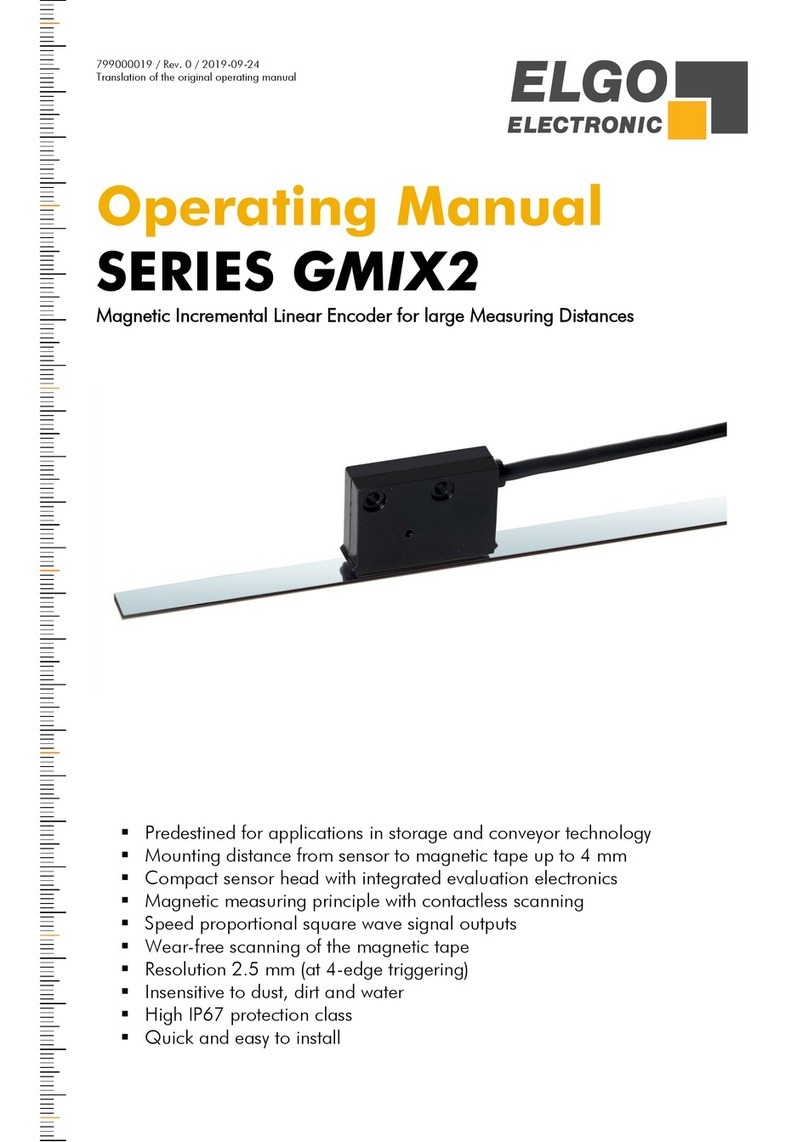
ELGO Electronic
ELGO Electronic GMIX2 Series User manual
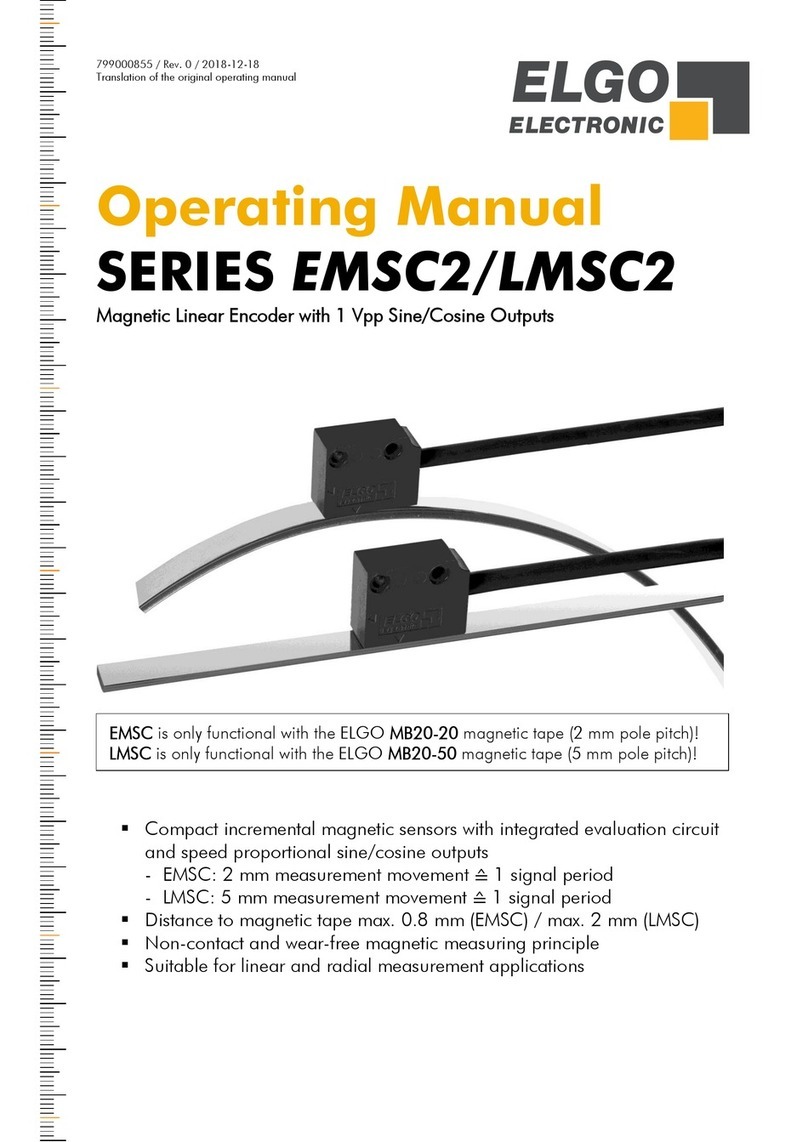
ELGO Electronic
ELGO Electronic EMSC2 Series User manual
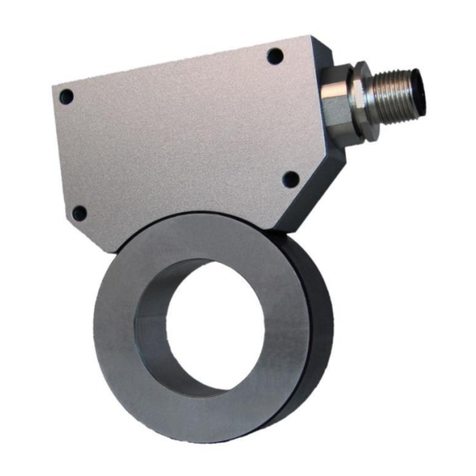
ELGO Electronic
ELGO Electronic EMAX-RO Series User manual
Popular Media Converter manuals by other brands
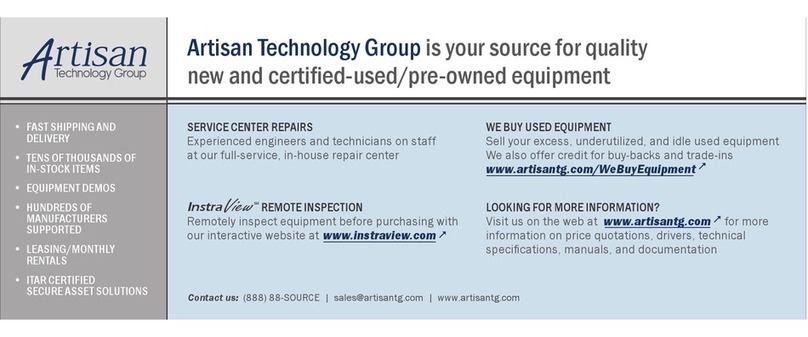
artisan
artisan DAC128V Hardware reference
Omnitron Systems Technology
Omnitron Systems Technology Omnitron iConverter GX/TM2 user manual

Converters.TV
Converters.TV DV-2001 Operation manual
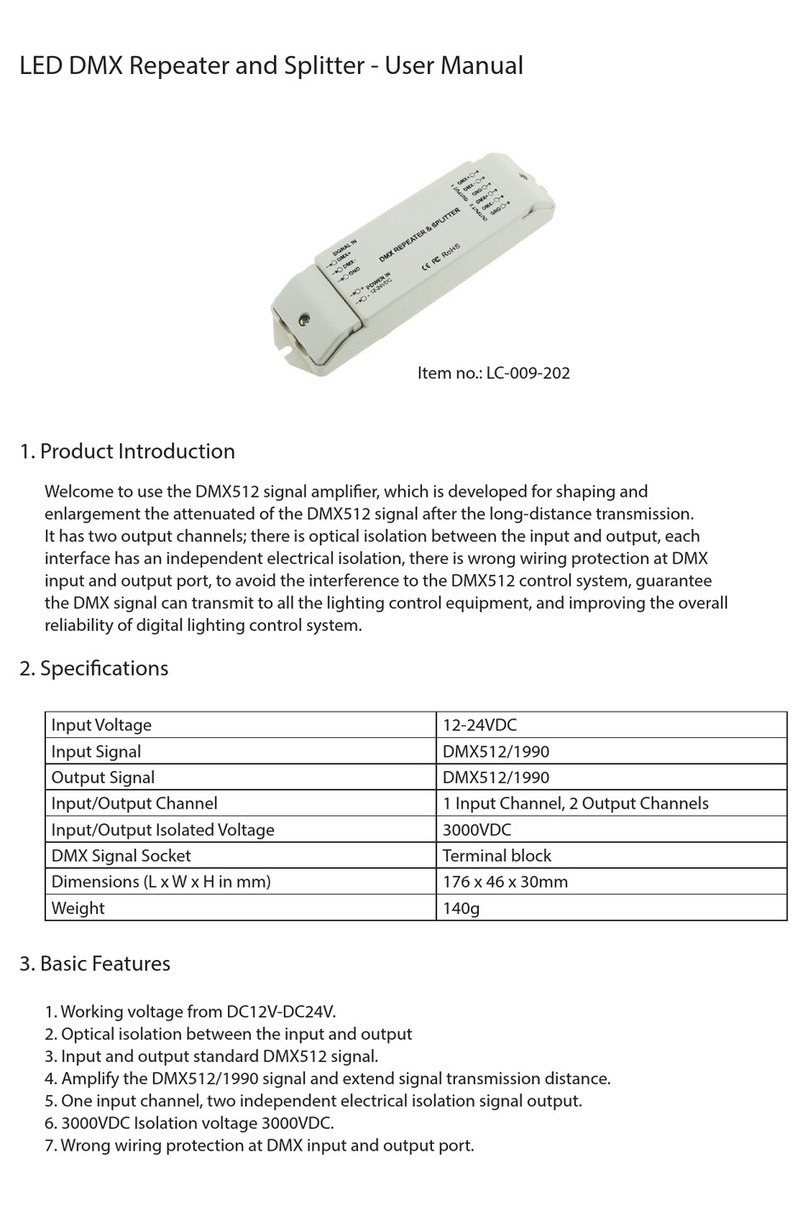
AUTLED
AUTLED LC-009-202 user manual
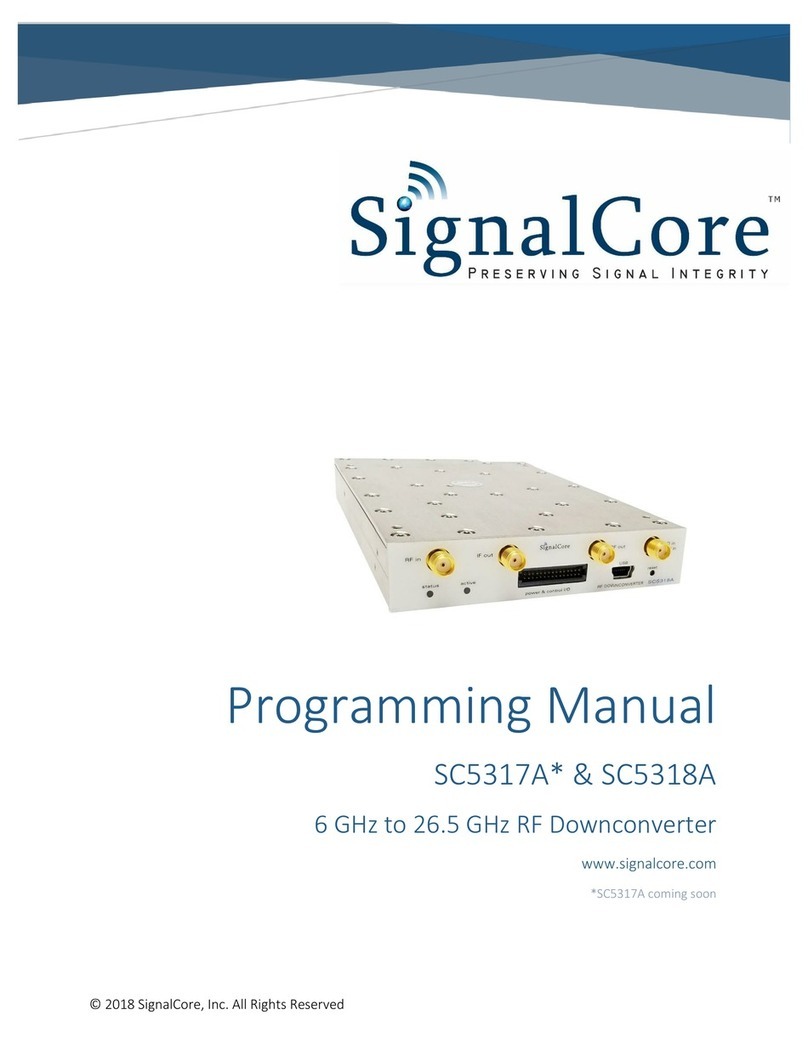
SIGNALCORE
SIGNALCORE SC5317A Programming manual
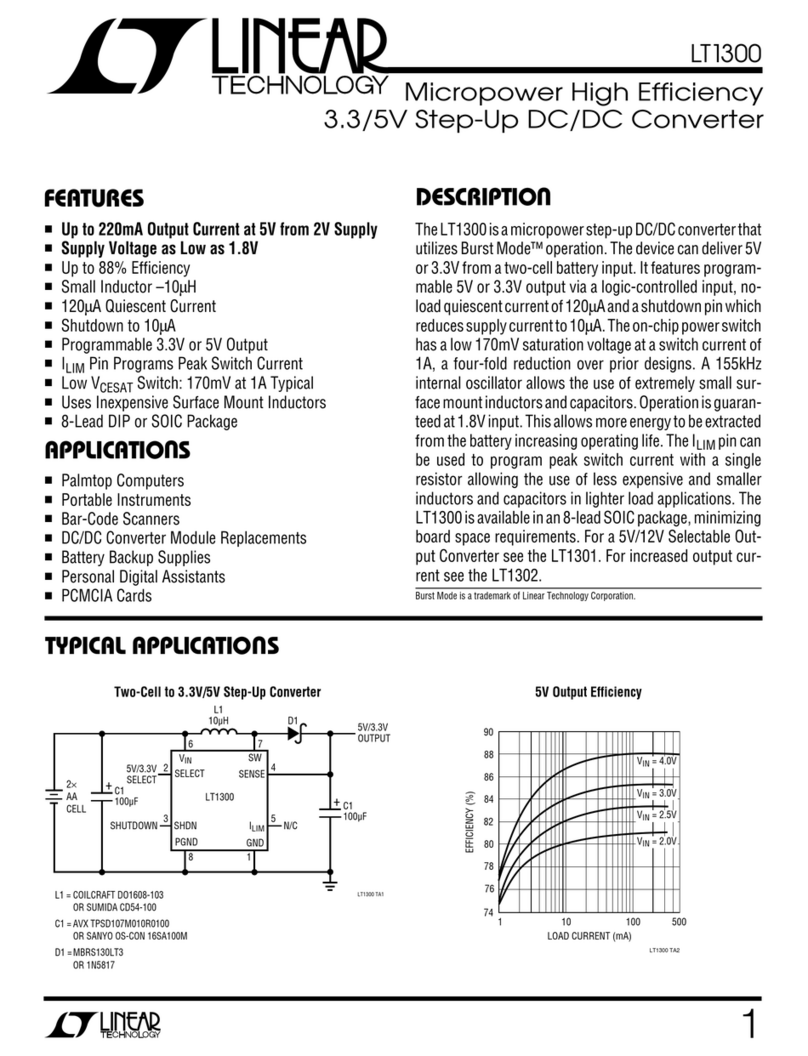
Linear Technology
Linear Technology LT1300 manual

